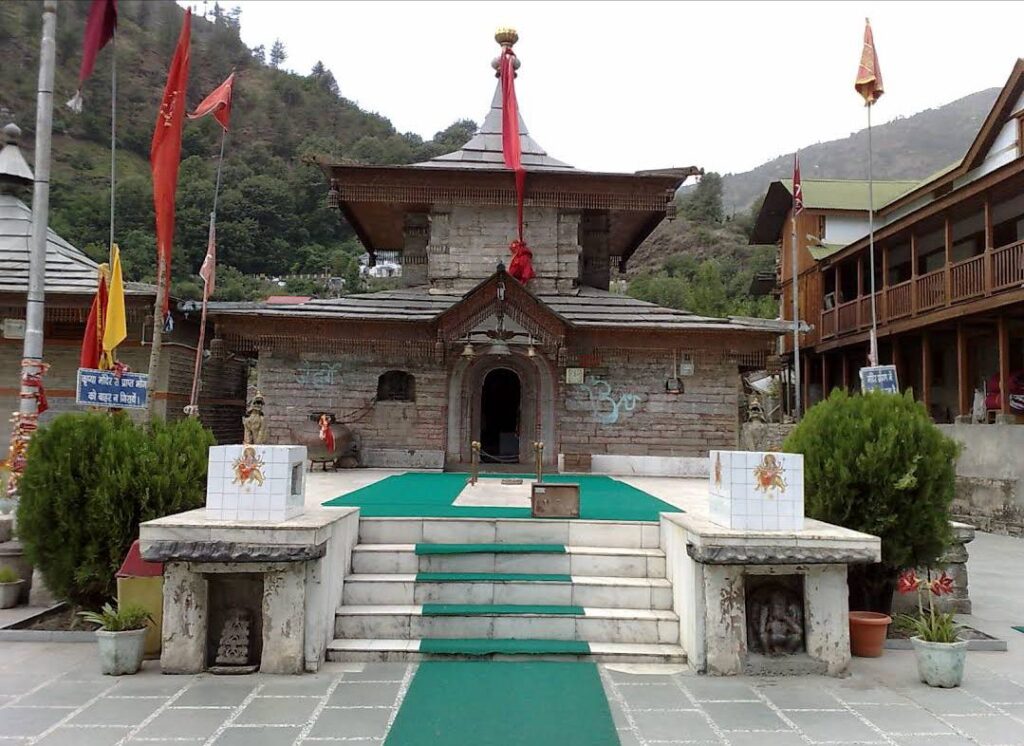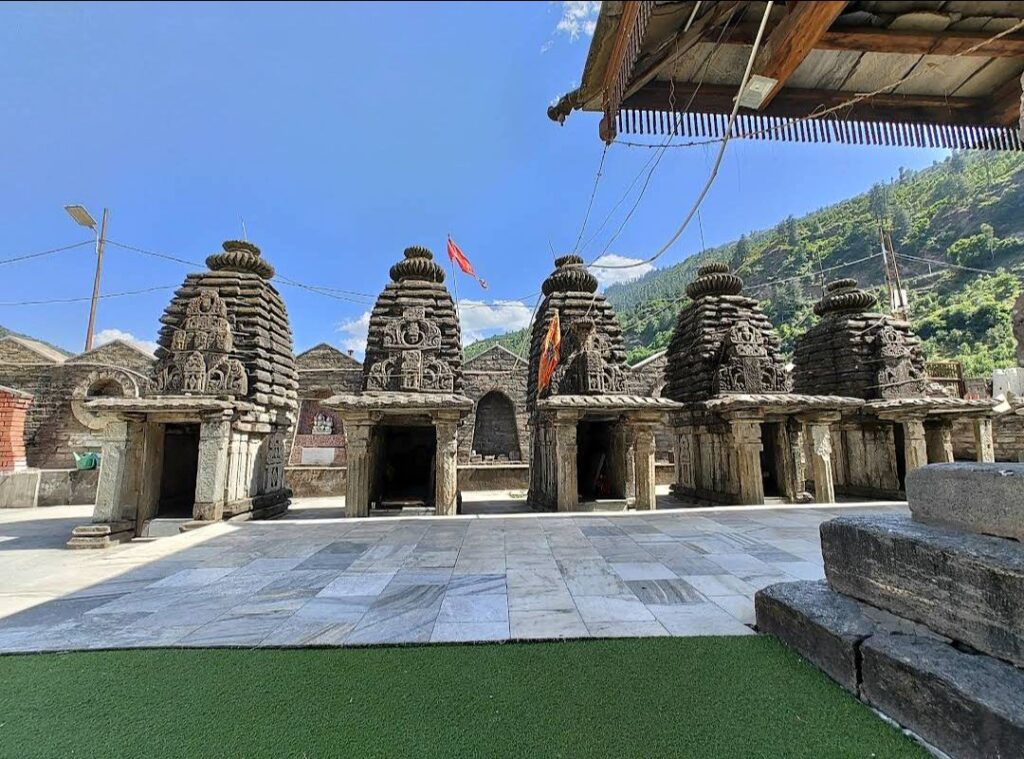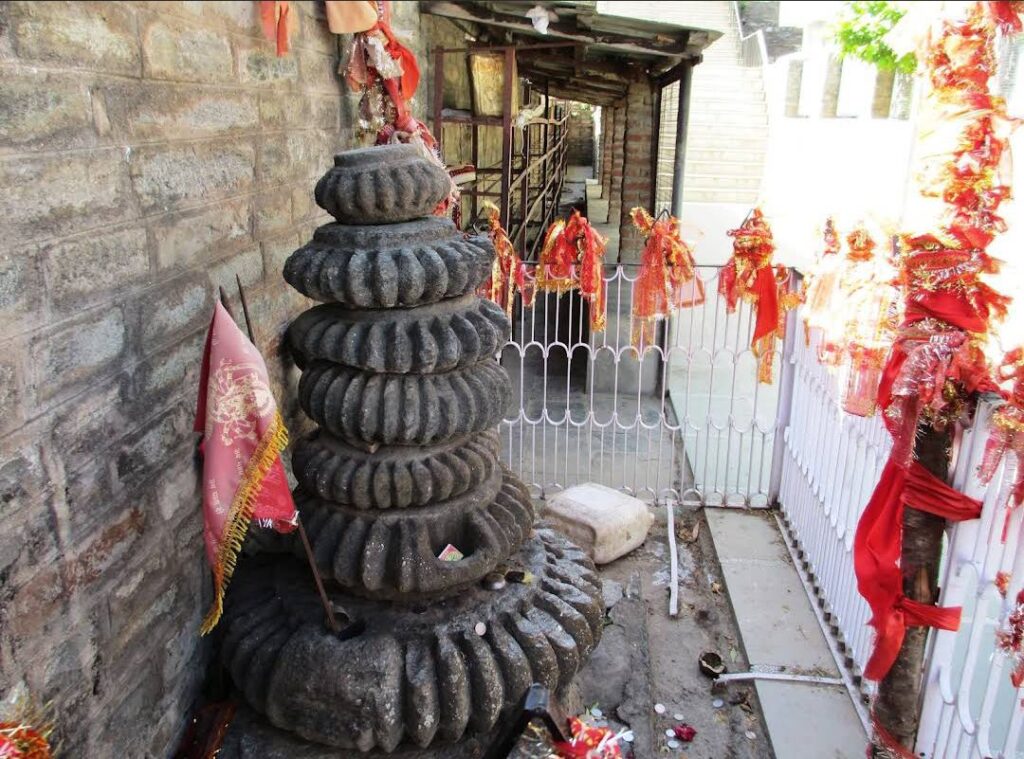Table of Contents
Introduction
Hatkoti Temple is situated in the Shimla district of Himachal Pradesh. This ancient temple is nestled in the village of same name. Hatkoti Temple has been around for a long, long time. Some say it was built by ancient gods, others say it was built by heroes from old legends. Regardless of how it came to be, one thing’s for sure: it holds a special place in the hearts of those who visit. As you step inside, you can’t help but feel a sense of peace and wonder. People still go there to find comfort even now, and prayers from long ago seem to linger in the air.

Come along as we uncover the mysteries surrounding Hatkoti Temple, including its legends, elegance, and calming effect on everyone who come. Welcome to a world where spirituality and history collide and where stories linger around every corner just waiting to be uncovered. welcome to Hatkoti Temple.
History and Background of Hatkoti Temple
Hatkoti Temple is more than just a place of worship; it’s also a live record of stories and history. Folklore connect the temple’s history to the brave actions of the Pandavas from the Indian epic, the Mahabharata, though the temple’s exact history is still a secret.
It is believed that when the Pandavas were sent away from their kingdom, they went on a journey through the Himalayas seeking solace and divine blessings. According to a story, they were traveling when they came across the peaceful hills of Himachal Pradesh and met the powerful River Pabbar. The Pandavas chose to build a holy site to honor the gods because they were struck by how beautiful and holy the land was.
People say that the existence of Hatkoti Temple is due to the good deeds of these legendary people. As they worked to build the temple, they asked for spiritual help and dedicated it to Goddess Hateshwari, incarnation of Goddess Durga, who is the goddess of strength and protection.
The stories of the Pandavas’ connection to Hatkoti Temple continue to resonate through the ages, passed down from one generation to the next. Whether one believes these tales to be fact or fiction, they add a layer of mystique to the temple’s history, infusing it with a sense of wonder and reverence.
Religious Significance
As a place of spiritual devotion, Hatkoti Temple attracts pilgrims and devotees from all over the world to honor Goddess Durga, the temple’s divine deity. Goddess Durga is a highly adored figure in Hindu mythology, representing the victory of good over evil and a symbol of feminine power and protection. Devotees traveled to Hatkoti Temple for ages, hoping to obtain the blessings and direction of Goddess Durga for their lives. The deity enshrined within the temple is revered as ‘Mahishasuramardini,’ the slayer of the buffalo demon Mahishasura, who represents the forces of darkness and ignorance.
Hatkoti Temple is a center for many religious celebrations and rituals held throughout the year, each with a deep symbolic meaning. Navratri, a nine-day celebration honoring Goddess Durga and her incarnations, is one such festival. The temple is filled with passionate devotion during this auspicious time as worshippers assemble to honor the heavenly mother in all her magnificent glory.
Dussehra is another important holiday celebrated at Hatkoti Temple. It honors Lord Rama’s victory over the evil king Ravana. It is believed that on this day, Goddess Durga defeated Mahishasura in a fierce battle, signifying the victory of good over evil. Hatkoti Temple draws pilgrims all year long in addition to these spectacular events. These pilgrims come seeking blessings for every aspect of their lives, including as success, prosperity, and good health.
Also read- The Mystique of Kamakhya Devi Temple.
Architecture of Hatkoti Temple
The focal point to Hatkoti Temple is the sanctum sanctorum, which is dedicated to Goddess Hateshwari. The architecture of the temple reflects the traditional Himachali style, which can be identified by its elaborate decorations, wooden carvings, and sloped roofs. Scattered throughout the temple complex are five stone huts, each representing one of the Pandavas from the Mahabharata epic. These huts serve as a reminder of the legendary connection between the Pandavas and Hatkoti Temple.

One of the most enchanting features of Hatkoti Temple is its idyllic location on the banks of the River Pabbar. The silent waters of the river flow gently alongside the temple complex, creating a peaceful and picturesque setting that enhances the overall spiritual atmosphere. Visitors can take leisurely strolls along the riverbank, soaking in the natural beauty and tranquility of the place.

As visitors explore the temple complex, they’ll discover a treasure trove of ancient stone carvings and sculptures, each telling a story of devotion and divine grace. From intricately carved pillars to ornate doorways, these exquisite artworks bear testament to the skill and craftsmanship of the artisans who labored to create them. Surrounded by lush greenery and towering mountains, Hatkoti Temple offers breathtaking views of the surrounding landscape. The temple’s breathtaking surroundings of lush valleys, snow-capped hills, and thick woods heightens its spiritual appeal and invites visitors to establish a connection with the natural world.

Also read- Naggar Castle- Himachal’s Historic Architectural Marvel
How to reach Hatkoti Temple
Hatkoti Temple is located in the Shimla district of Himachal Pradesh, approximately 100 kilometers from the city center. The nearest major town is Rohru, which is well-connected by road to Shimla and other nearby regions. Visitors can reach Hatkoti Temple by hiring a taxi or private vehicle from Shimla. If you’re on a budget, there are also buses operating in the area. I don’t know much about the taxi fare, but on the bus, the ticket price would be around Rs 250 per person. Just hop on any bus going to Rohru, and you’ll reach Hatkoti in about 4 to 5 hours.
Best Time to Visit
The best time to visit Hatkoti Temple is during the spring and summer months, from March to June, when the weather is pleasant and conducive to outdoor exploration. However, the temple can also be visited year-round, with each season offering its own unique charm. There are no entry fees to visit Hatkoti Temple, and it is open to visitors of all faiths. However, visitors are expected to dress modestly and respect the rules and regulations of the temple premises. Photography may be restricted in certain areas, so it’s advisable to check with temple authorities before taking pictures.
Nearby Attractions
In addition to visiting Hatkoti Temple, travelers can explore the scenic beauty of the surrounding area, which is characterized by lush forests, cascading waterfalls, and panoramic views of the Himalayan peaks. Nearby attractions include the scenic Chanshal Pass, the picturesque village of Kotkhai, and the beautiful Tani Jubbar Lake. While there are limited accommodation options near Hatkoti Temple, visitors can find a range of hotels, guesthouses, and homestays in Rohru and nearby towns.
Conclusion
In the centre of Himachal Pradesh, Hatkoti Temple stands as a symbol of eternal devotion and cultural legacy with its combination of history, spirituality, and architectural beauty. Traveling through its hallowed grounds takes tourists to a place where the past and present merge and where the peaceful sounds of the River Pabbar blend with the whispers of old stories. Each element of Hatkoti Temple, from its simple stone cottages honoring the Pandavas of the Mahabharata to its imposing main temple construction devoted to Goddess Durga, relates a tale of divine grace, determination, and trust. The temple’s charming location beside a river enhances its charm and invites visitors to stop and think in the calm beauty of its surroundings.
Hatkoti Temple, however, is a living example of the everlasting spirit of the people who have respected it for generations; it is more than just a place of prayer.
Let us keep in mind Hatkoti Temple’s timeless beauty and spiritual importance as we say it farewell. May those who enter its hallowed halls experience wonder and reverence, and may its legacy live on for many years to come, serving as a constant reminder of the unbreakable connection between humans and the divine.
“Om Shanti, Shanti, Shanti,” an old song, says, “May peace rule in Hatkoti Temple and in the hearts of all who find comfort in its sacred embrace.”
